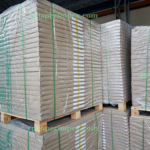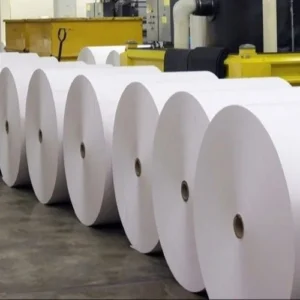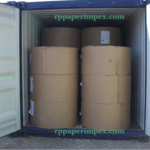Process of Recycling Paper: A Comprehensive Guide from Collection to Reuse
Process of Recycling Paper: A Comprehensive Guide from Collection to Reuse
Process of Recycling Paper: A Comprehensive Guide from Collection to Reuse– According to the research by the Environmental Paper Network, if the global paper industry used 100% recycled content, it could decrease greenhouse gas emissions by up to 40%, reduce energy use by up to 21% and reduce water use by up to 36%.The Indian paper industry is expected to increase for the next 10 years at its current rate which would lead to a significant increase in scrap fiber required. So The demand for paper products is increasing globally day by day.
It is essential to explore economic practices in reusing waste paper to decrease environmental pollution and support a more circular economy. India’s paper industry is to be credited for the overall increase in recycling rates over the past few years. The paper industry is working hard to teach people about why recycling is important. They are also helping communities set up easy ways to recycle, making the whole recycling process simpler for everyone. In this article, we will discuss the “Complete Process of Recycling Paper: A Comprehensive Guide from Collection to Reuse”.
The Process of Recycling Paper
We use a lot of paper items in our daily lives, and it’s crucial to make it in an eco-friendly way. The good news is that paper is a flexible material that can be entirely recycled. Paper recycling involves gathering, sorting, and processing used paper items like cardboard, office paper, books, magazines, and newspapers to create new paper sheets. This process is great because it saves natural resources, lessens waste, and makes the environment cleaner. This process involves different steps. Here is an overview of the typical process:
Collection
The collection is the first stage of this process in which gathering used paper from various sources like offices, homes, schools, and other commercial Places. Recyclers and paper merchants collect paper materials from collection points such as paper stores, paper scrap yards, trash bins, and commercial outlets that generate used paper and paper waste.
Sorting and Transporting
After collecting the waste paper, the next stage of recycling paper is sorting paper. In this step collecting paper is sorted by quality and type. The sorted paper is then transported to a recycling facility, where it is sorted again to remove any contaminants, such as staples, glue, or plastic. Some recycle will always accept mixed-graded waste paper and some will accept only a preferred grade for the recycling paper process.
Shredding and Pulping
The arranged paper is then pulped to separate the fibers and eliminate ink, coatings, and different substances. In the shedding stage, The arranged paper is then destroyed into little parts to make it more straightforward to deal with in the pulping system. After that, the Sheeding paper is pulped by mixing it with chemicals and water to break it down into a slurry of fibers.
Cleaning and De-Inking
After the formation for pulping, the next steps of this process are cleaning and de-inking. The professionals will remove the large contaminants and put the pulp into the new tank. In this tank can be chemicals and bubbles of air for removing the dyes and inks. The pulp in the tank may be further cleaned and de-inked to remove any remaining ink or other materials.
Drying and Finishing
The refined pulp is then formed into new paper products using a paper-making machine. The paper is pressed, dried, and rolled to the desired thickness, quality, and size. This ensures that all forms of moisture get removed from the pulp. Then, to completely dry out the pulp sheet, you make use of a heated metal roller. The finished paper products may then be cut, packaged, and transported for use in a variety of applications in different business.
Incredible Benefits of Paper Recycling
Now that you know all about the paper recycling process, you might be wondering what you stand to gain. Well, the fact is that various benefits and advantages come with paper recycling.
- The recycling paper allows you to save about 70% of energy.
- Paper recycling helps you to reduce greenhouse emissions and pollution.
- Recycling is a cost-efficient way of conserving the environment.
- It produces less pollution (approx 73%) as compared to preparing from raw materials.
- The recycling process also helps to create jobs and improve the economy
In Conclusion
If you want to know the “Process of Recycling Paper”, you can come to visit our recycling plant. We’re RP Paper Impex, a well-known paper manufacturer in India. We help all kinds of businesses figure out the best ways to recycle their waste, so less stuff ends up in landfills. Our mission is to stop waste, and we’re committed to finding good solutions for all kinds of waste. Come check out our plant and see the recycling process in action!





